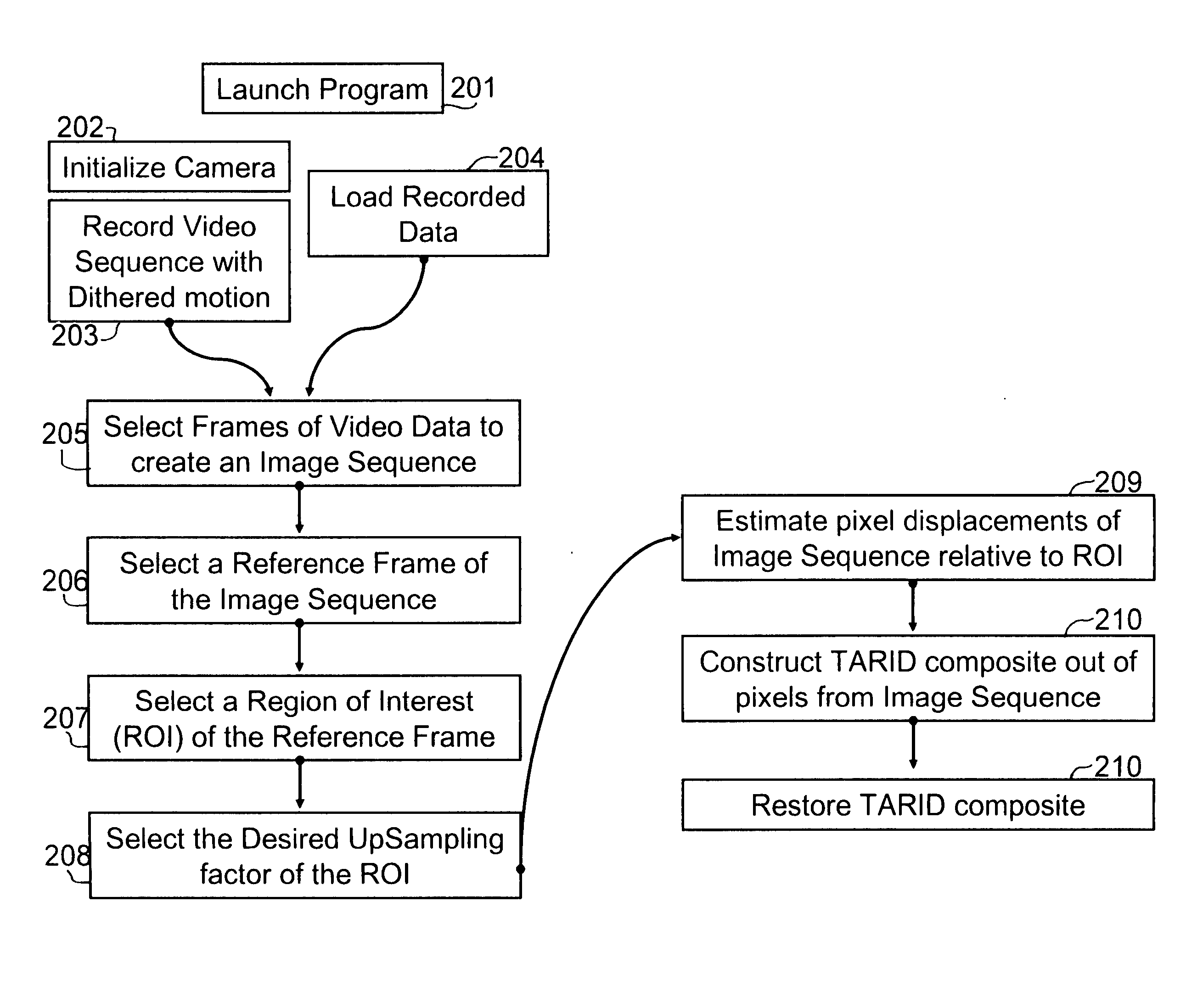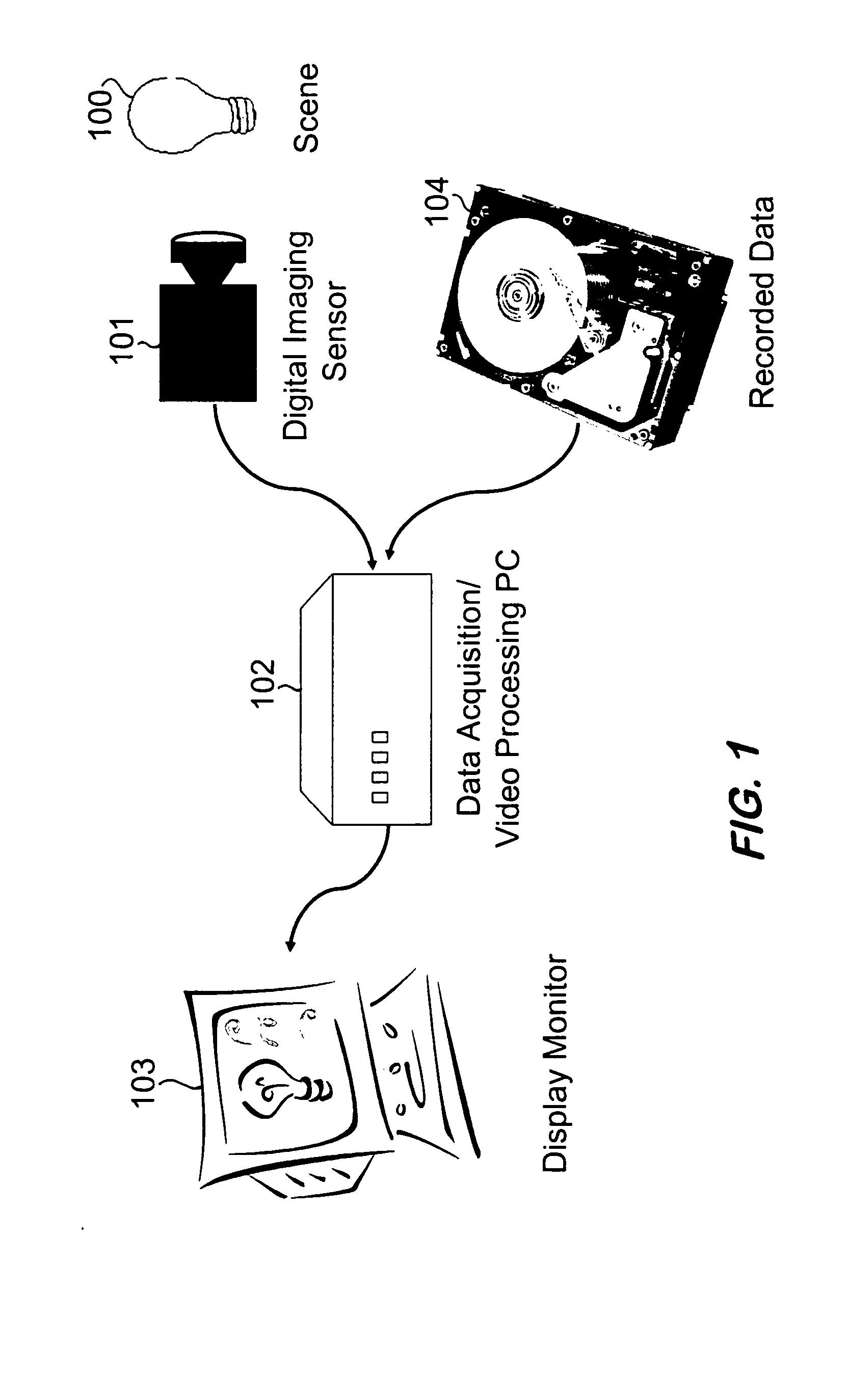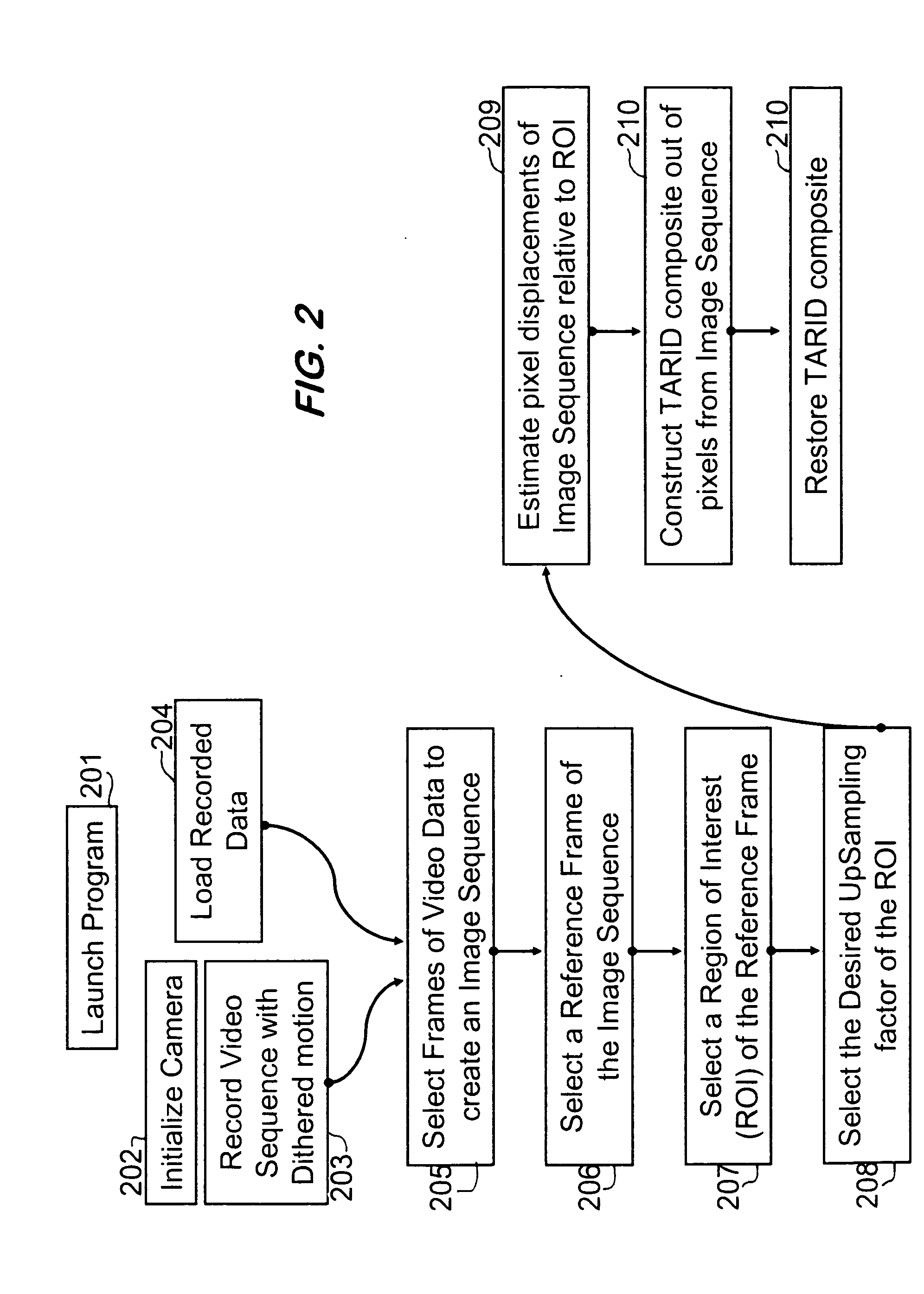Algorithmic technique for increasing the spatial acuity of a focal plane array electro-optic imaging system
an electro-optic imaging and spatial acuity technology, applied in the field of optical imaging systems with focal plane arrays, can solve the problems of unrecoverable spatial alias distortion, insufficient spatial sampling of projected optical images, and bounded performance of single-frame restoration techniques, and achieve the effect of improving the spatial resolution of such imaging systems and higher spatial resolution
- Summary
- Abstract
- Description
- Claims
- Application Information
AI Technical Summary
Benefits of technology
Problems solved by technology
Method used
Image
Examples
Embodiment Construction
[0036] This preferred embodiment of this process is on a digital imaging system illustrated in FIG. 1. This system consists of a digital imaging sensor or camera, 101, consisting of a lens that focuses light, 100, onto a focal plane array of photo-detectors that produces an electronic representation of the projected optical image of the lens. The data from this camera is then captured by some form of a computing platform, 102, such as a personal computer, laptop, handheld digital assistant, or any processing devices embedded within the camera, 101. Such a computing platform may also store captured image sequences for long durations on non-volatile media, 104. This computing platform is also capable of implementing the described process, rendering an image that is presented to the operator through some display device, 103.
[0037] The process of increasing the spatial acuity of Focal Plane Array based Electro-Optic imaging systems by accumulating multiple frames of imagery into a sing...
PUM
 Login to View More
Login to View More Abstract
Description
Claims
Application Information
 Login to View More
Login to View More - R&D
- Intellectual Property
- Life Sciences
- Materials
- Tech Scout
- Unparalleled Data Quality
- Higher Quality Content
- 60% Fewer Hallucinations
Browse by: Latest US Patents, China's latest patents, Technical Efficacy Thesaurus, Application Domain, Technology Topic, Popular Technical Reports.
© 2025 PatSnap. All rights reserved.Legal|Privacy policy|Modern Slavery Act Transparency Statement|Sitemap|About US| Contact US: help@patsnap.com



